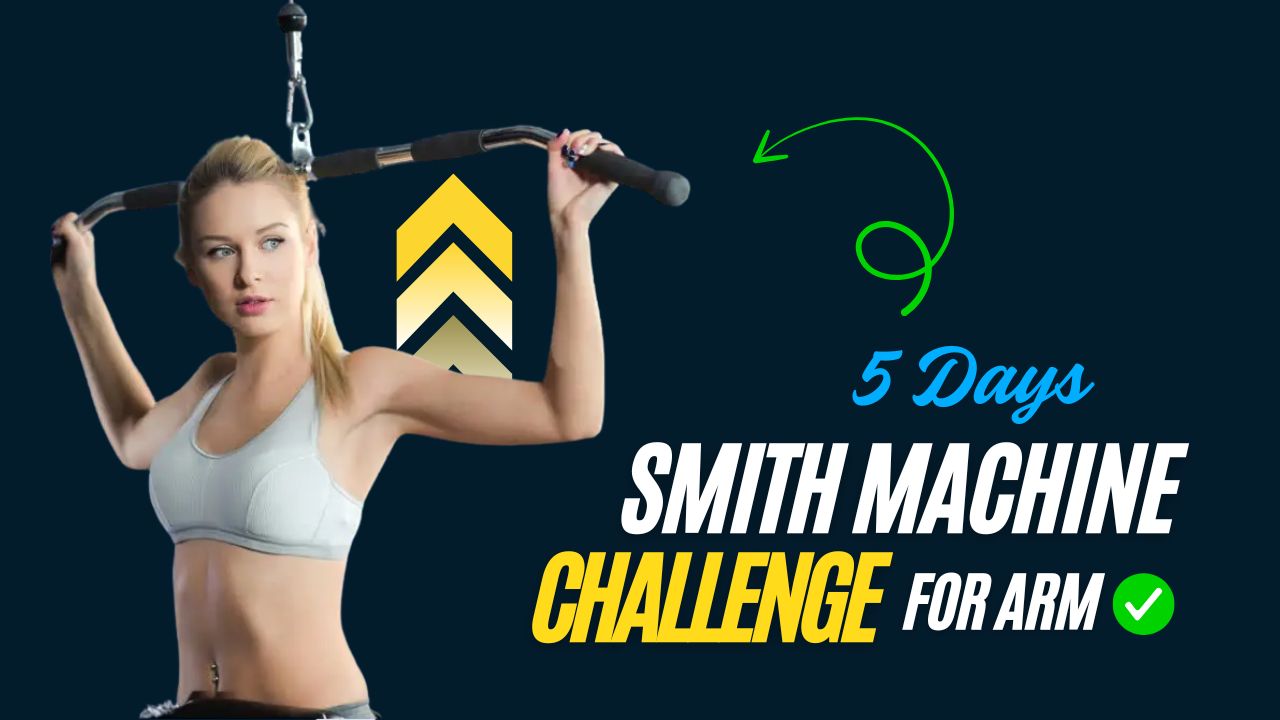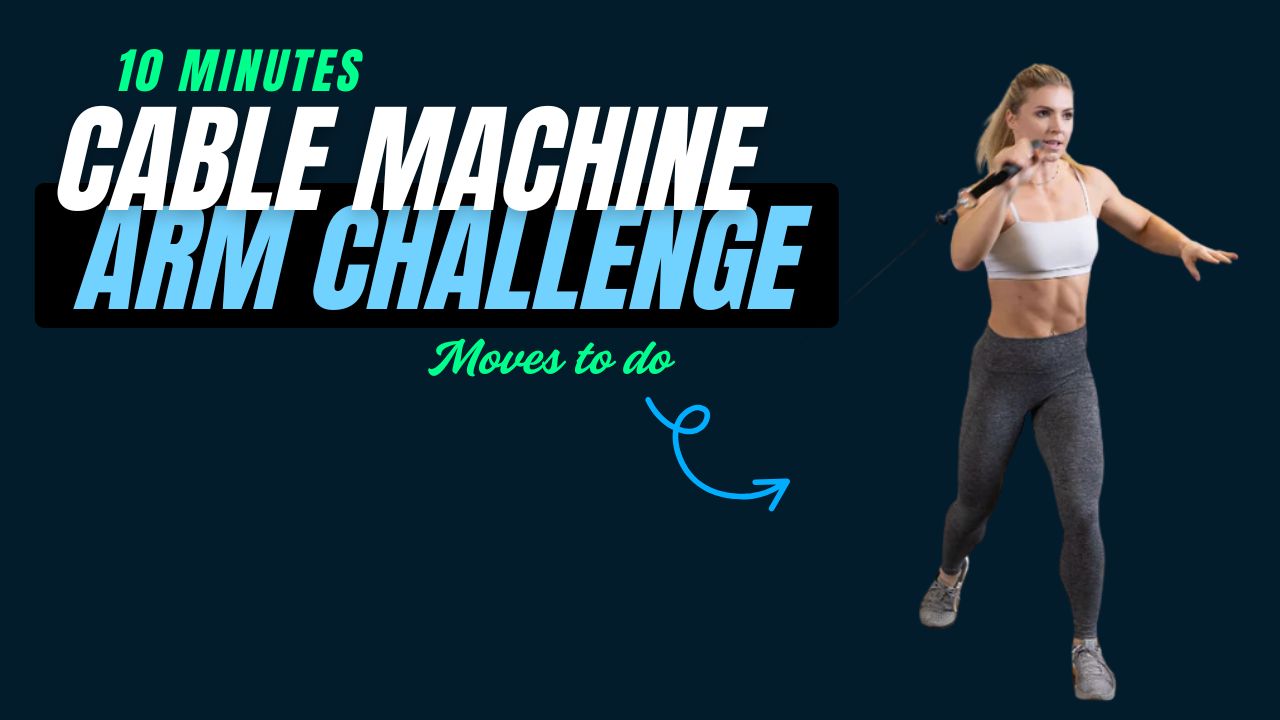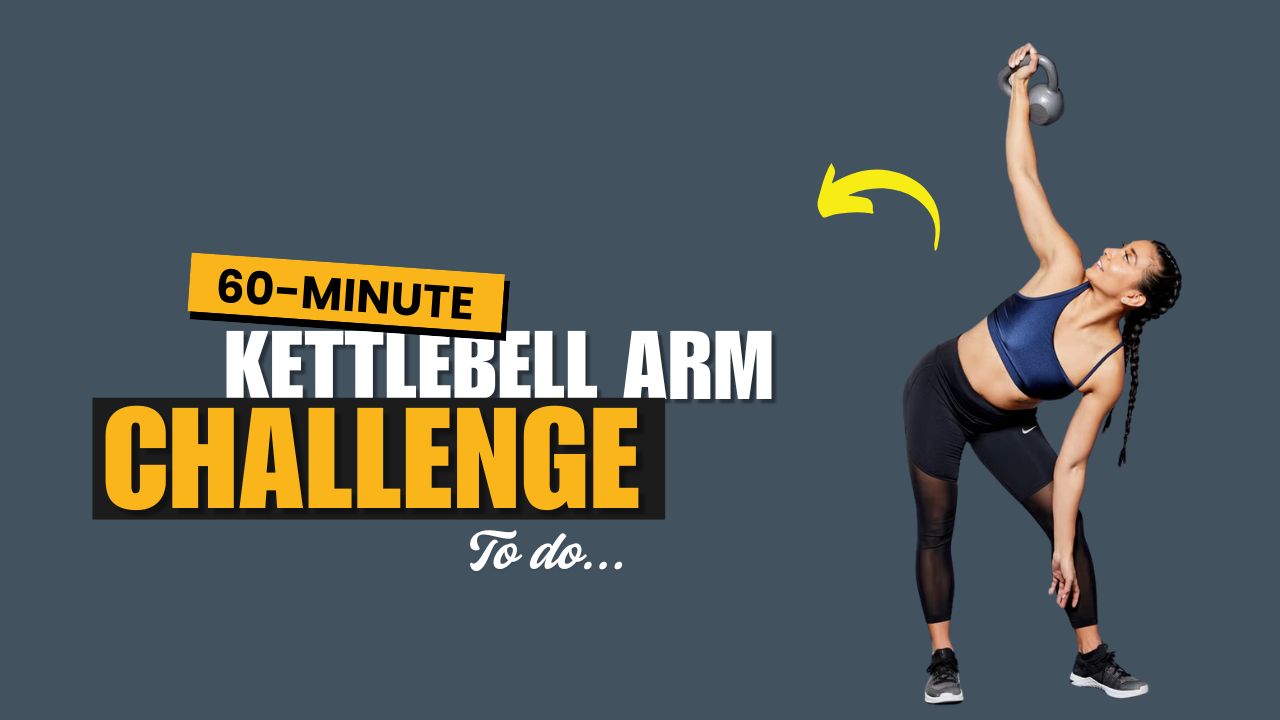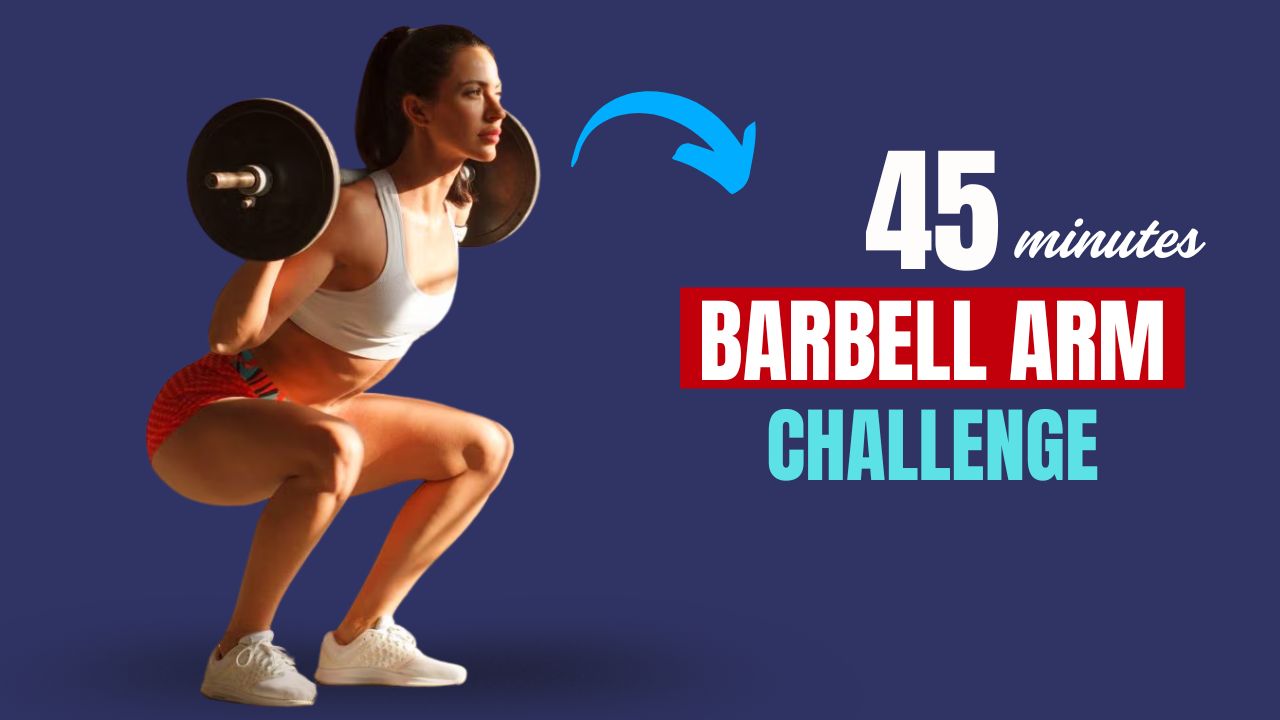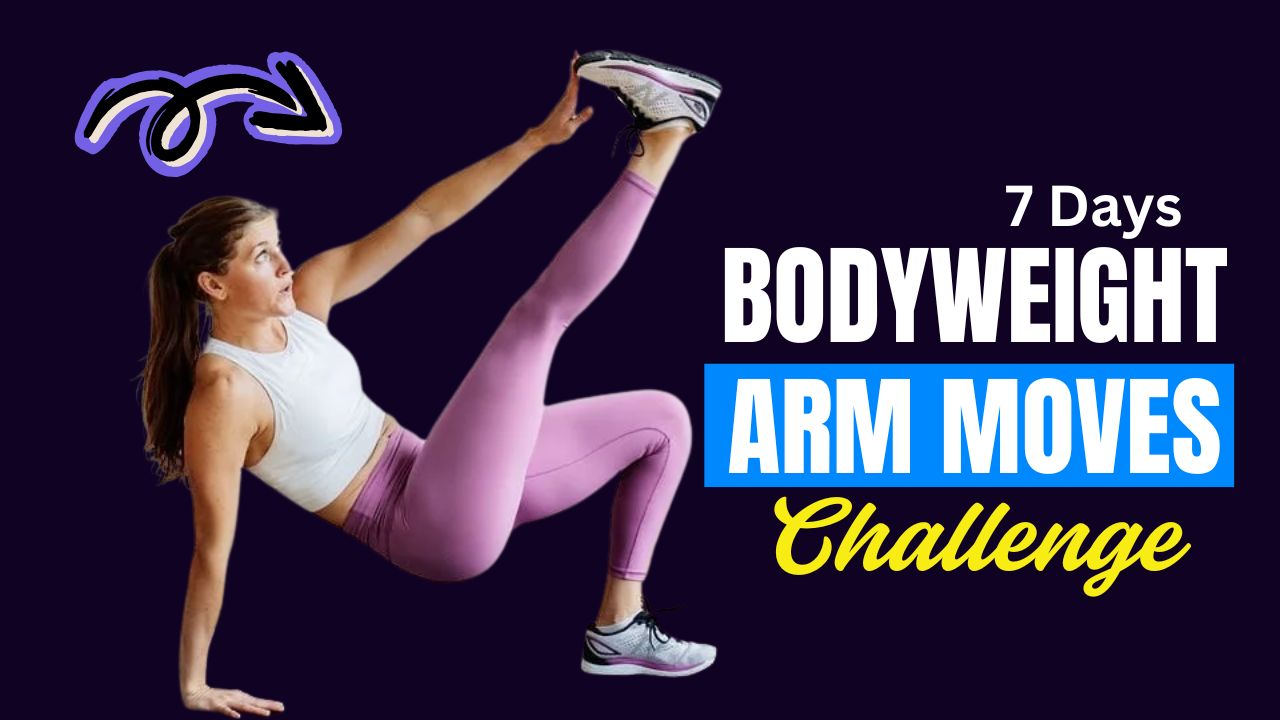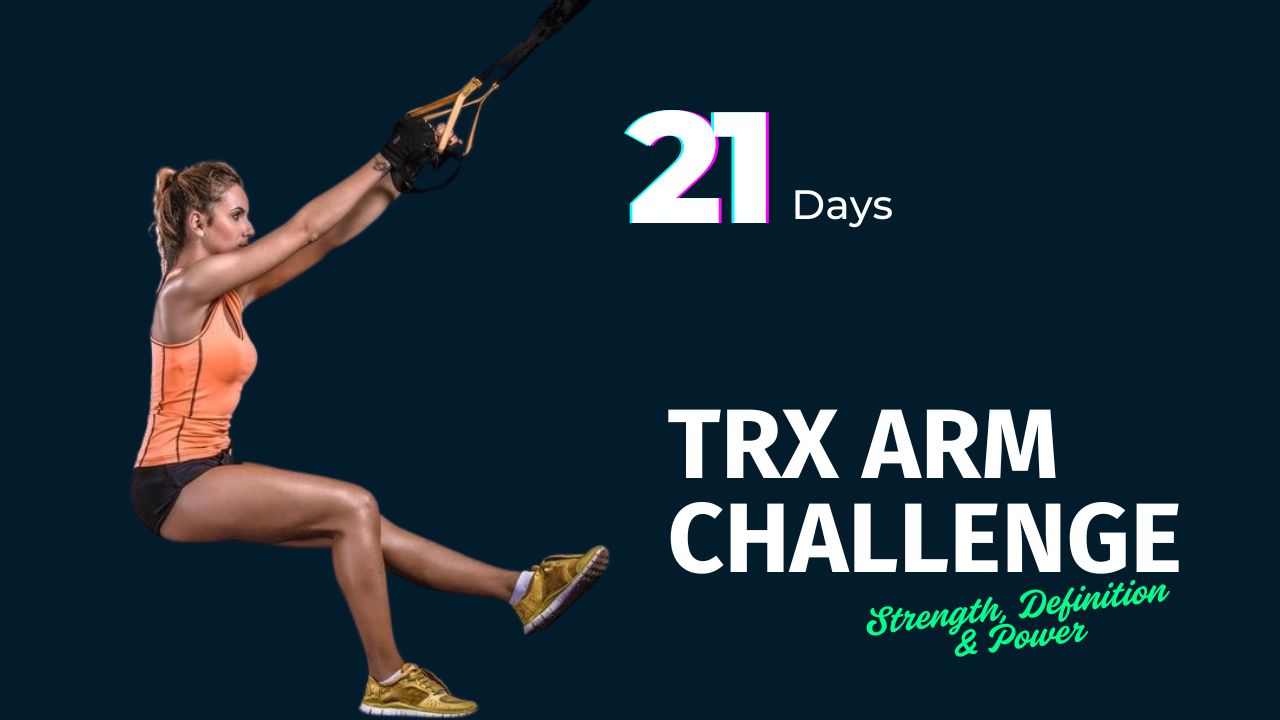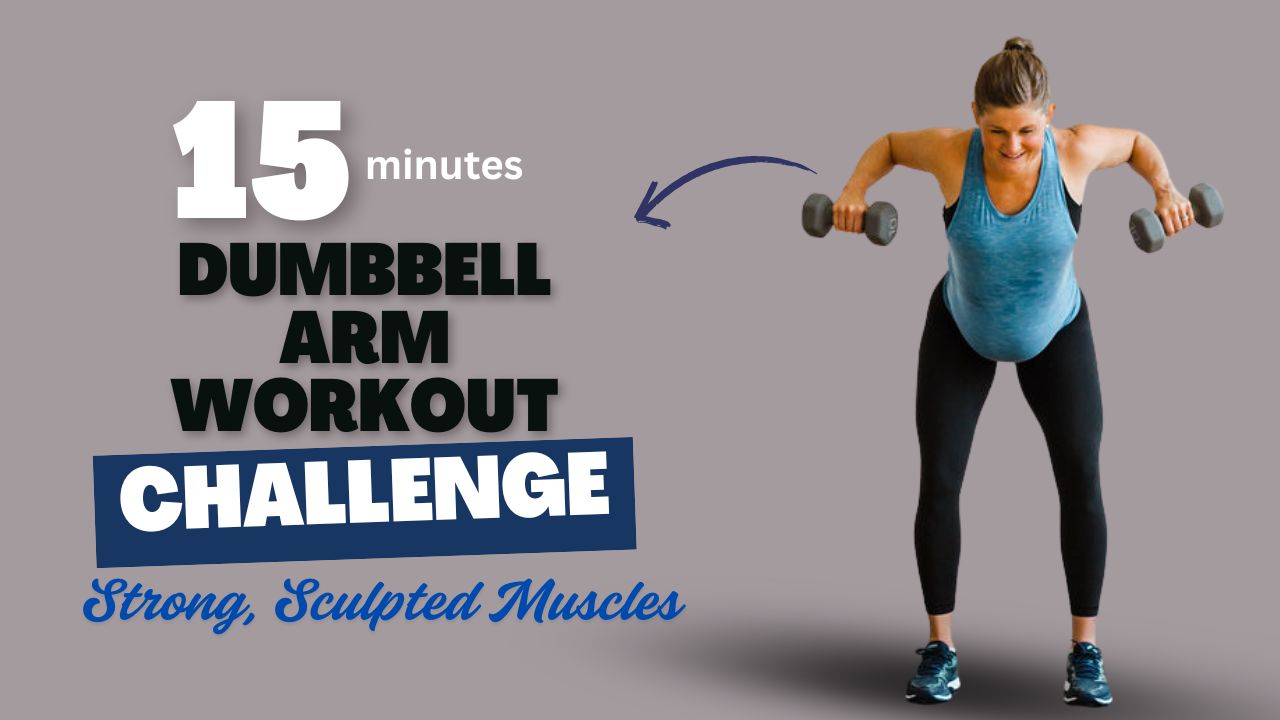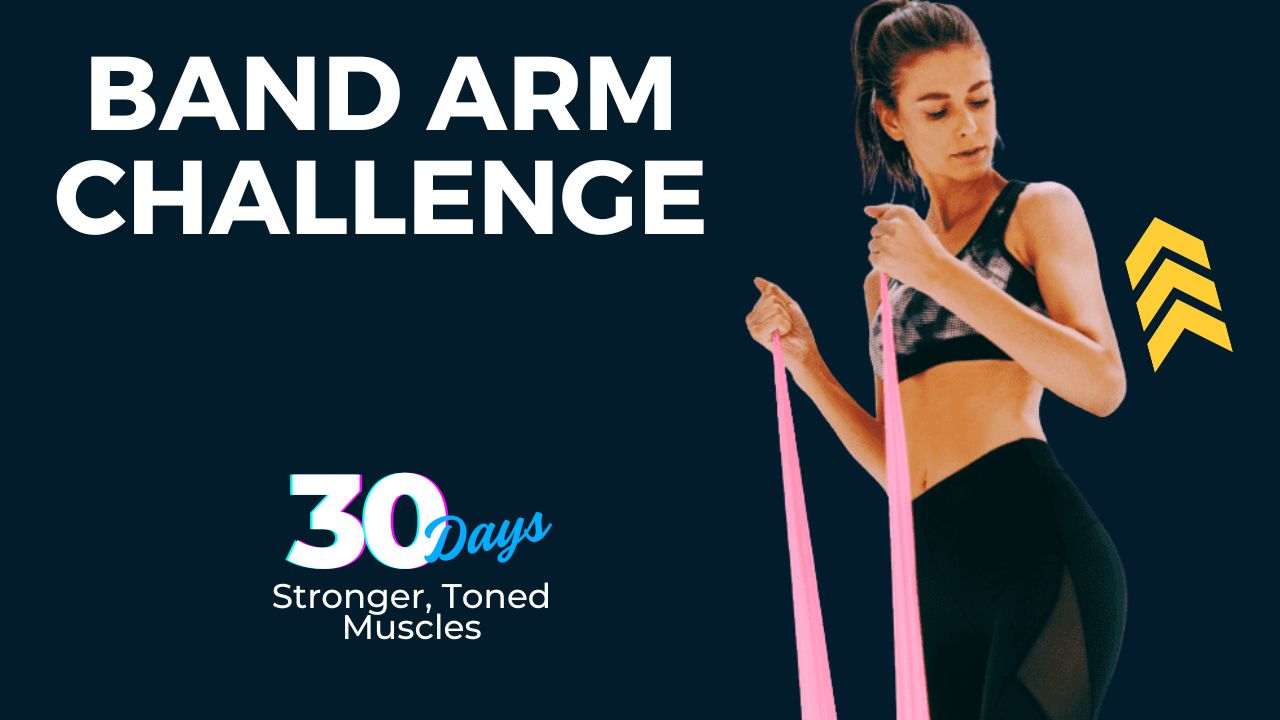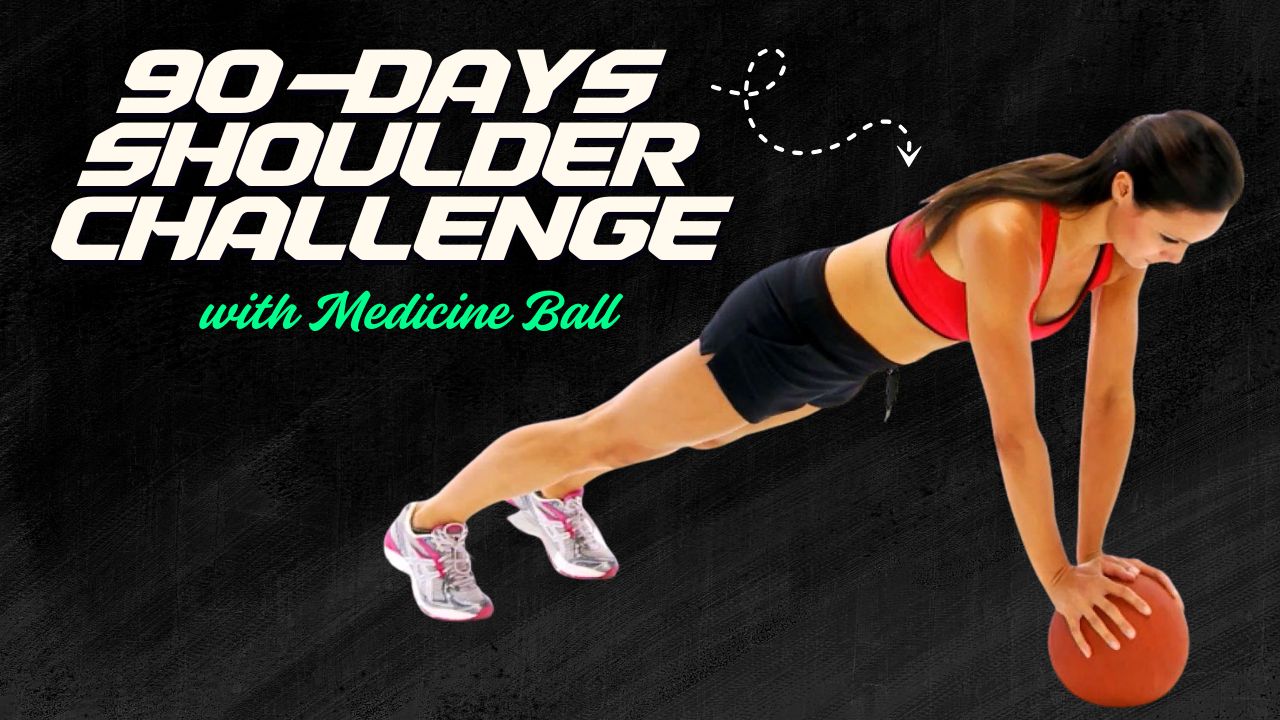Are you still skipping leg day because it feels repetitive or boring?
What if we told you there’s a lesser-known method that isolates and sculpts your quads while also improving balance, core stability, and joint health?
Enter the Hi-Lo Pulley Cable system — a secret weapon for athletes and gym lovers who want a more functional, resistance-controlled alternative to squats and lunges.
It adds variety, constant tension, and smooth mechanics to target the quadriceps from angles that free weights often miss.
Did you know? Cable machines offer up to 30% more time under tension compared to dumbbells and barbells — which leads to better hypertrophy (muscle growth).
Let’s dive into 7 powerful, quad-focused Hi-Lo Cable exercises, complete with benefits and how-tos.
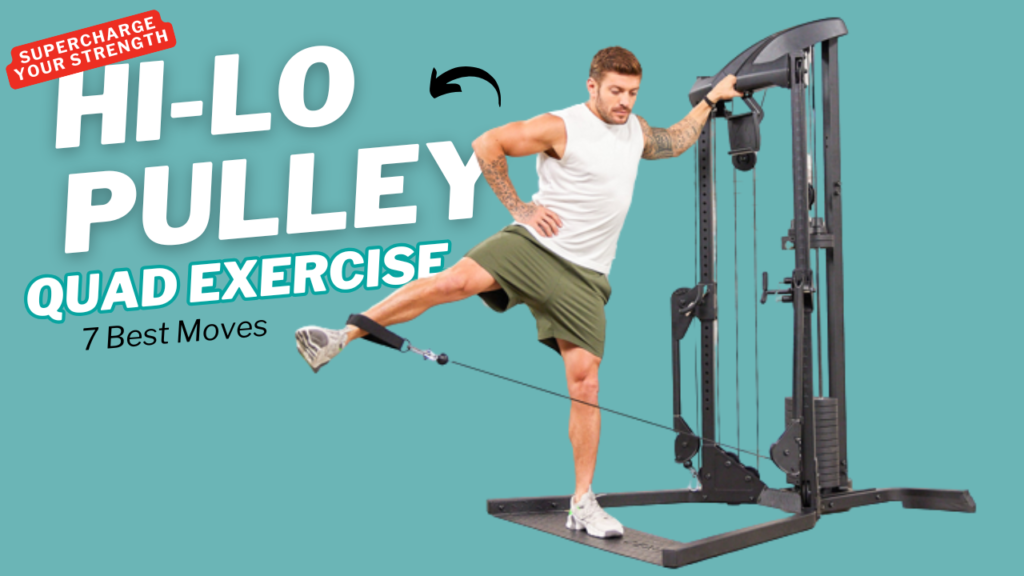
Table of Contents
What Can Happen After 30 Days of Hi-Lo Cable Quad Exercises
| Visible & Physical Changes | Performance & Strength Gains |
|---|---|
| More defined and toned thighs | Increased quad muscle strength |
| Improved leg symmetry and shape | Better balance and coordination |
| Reduced fat around the thighs (with proper diet) | Stronger knee support and joint stability |
| Enhanced posture and standing endurance | Higher resistance tolerance in workouts |
| Noticeable firmness in upper quads | Improved muscle-mind connection during leg work |
Do’s & Don’ts of Hi-Lo Cable Quad Exercises
| Do’s | Don’ts |
|---|---|
| Warm up before starting your quad routine | Don’t jump straight into heavy weights without prep |
| Keep a controlled, steady tempo during each rep | Don’t rush through reps or swing using momentum |
| Maintain upright posture during squats and lunges | Don’t lean too far forward or arch your back excessively |
| Adjust the pulley height to match each specific move | Don’t use one pulley position for every exercise |
| Start with light resistance if you’re a beginner | Don’t ego lift — improper form can lead to injuries |
| Focus on full range of motion and quad engagement | Don’t do half-reps unless it’s a specific strategy |
| Use proper breathing (exhale on effort) | Don’t hold your breath during the exercise |
| Stretch and cool down after your workout | Don’t skip recovery — it’s essential for muscle growth |
1. Cable Front Squat (Low Pulley)
Target: All four quadriceps heads (especially the rectus femoris)
How to:
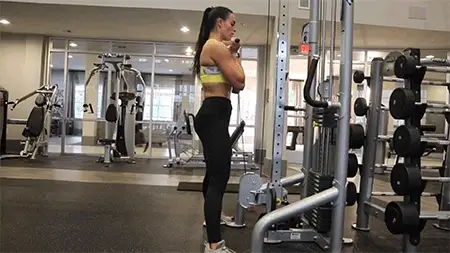
- Attach a rope or straight bar to the low pulley.
- Stand facing the machine and hold the attachment at shoulder level, elbows tucked in.
- Step back slightly, feet shoulder-width apart.
- Lower into a squat, keeping your torso upright.
- Drive through your heels to return.
Benefits:
- Keeps constant resistance on quads.
- Encourages upright posture, reducing back strain.
- Builds depth and endurance in thighs.
2. Cable Step-Through Lunge (Low Pulley, Walking Motion)
Target: Quads (focus on the front leg), glutes
How to:
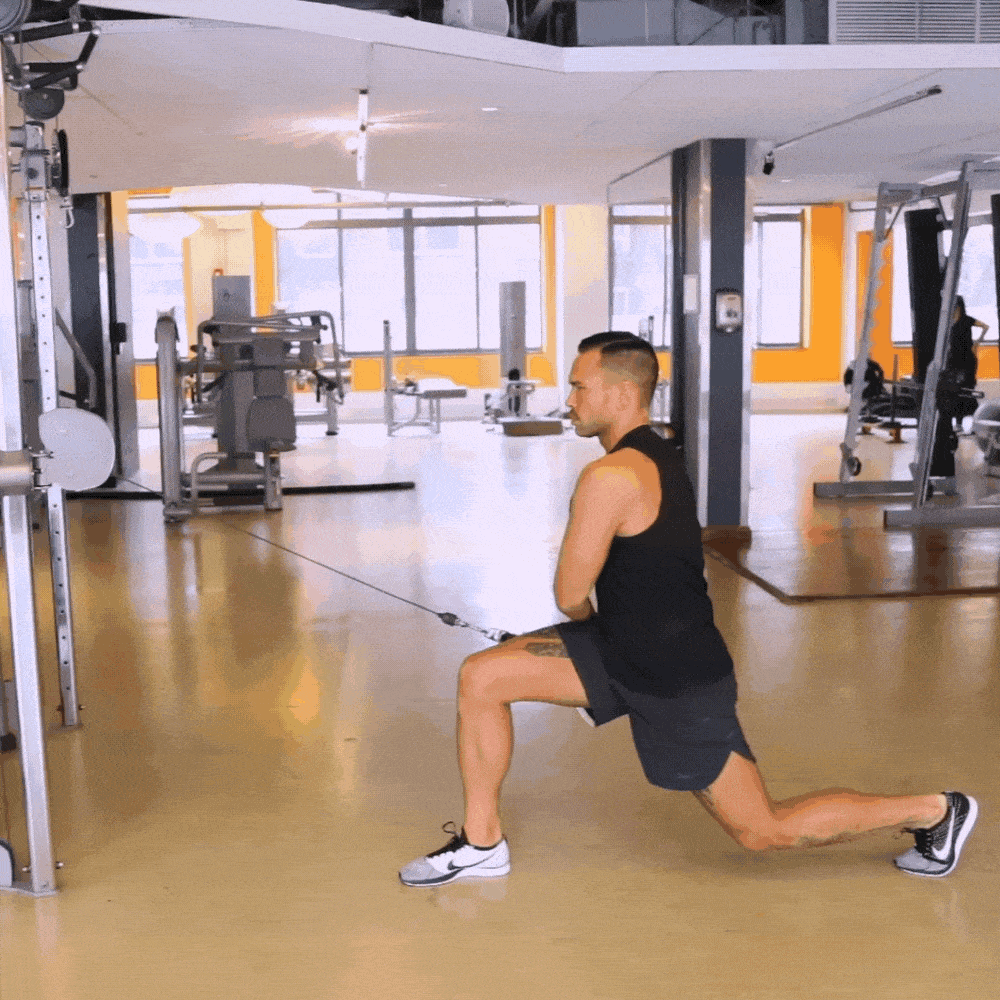
- Set a D-handle at the low pulley.
- Hold the handle in one hand, and step forward with the opposite leg.
- Lower into a deep lunge, knee in line with the ankle.
- Push through the heel to step forward and repeat.
Benefits:
- Works each leg unilaterally (helps fix imbalances).
- Adds dynamic movement for athletic performance.
- Combines stability, coordination, and muscle tension.
3. Cable Leg Extension (High Pulley, Modified)
Target: Vastus medialis (inner quad), rectus femoris
How to:
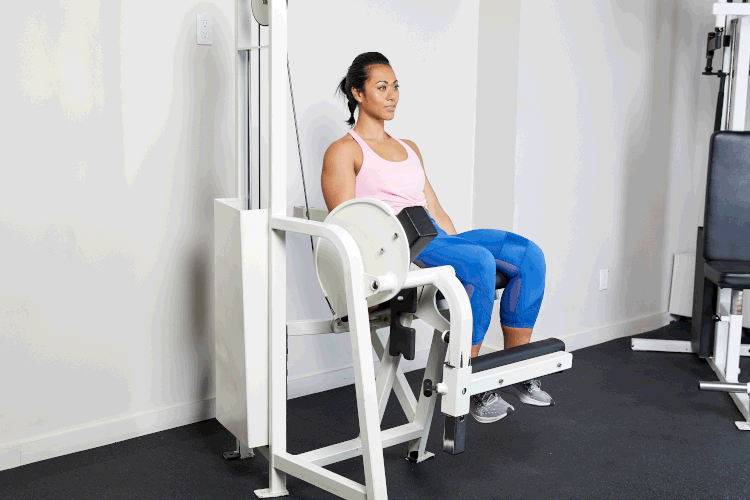
- Attach an ankle strap to the high pulley.
- Sit on a bench placed in front of the machine.
- Strap the cable to your ankle and extend your leg forward slowly.
- Pause at full extension, lower with control.
Benefits:
- Safer on knees than machine-based leg extensions.
- Can be adjusted for precise resistance.
- Great for quad isolation and inner thigh definition.
Myth Buster: People believe only leg press or barbell squats can grow quads. In reality, controlled tension from cables can activate deeper muscle fibers more effectively!
4. Cable Split Squat (Hi to Low Pulley Angle)
Target: Quads (focus on front leg), core stabilizers
How to:
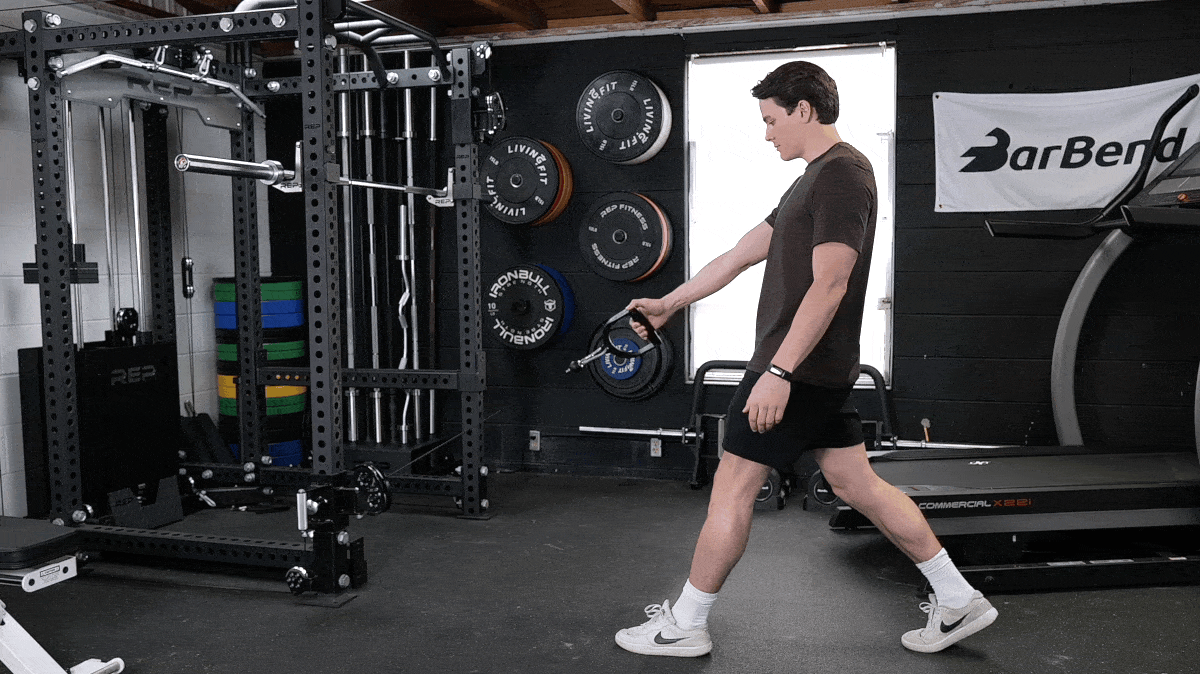
- Use a low pulley with a D-handle.
- Step into a split stance, holding the cable in the opposite hand of the front leg.
- Lower into a lunge, front knee at 90°.
- Push up through the front leg to return.
Benefits:
- Improves unilateral strength.
- Great for targeting quads without loading the spine.
- Helps in posture correction and balance.
5. Cable Sissy Squat (Low Pulley Anchor)
Target: Rectus femoris and outer quads
How to:
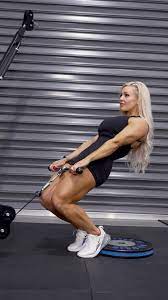
- Set the cable at the lowest point.
- Hold the cable with both hands in front of your body.
- Lean back slightly and bend your knees forward (heels may lift slightly).
- Keep your hips forward as you lower, then return.
Benefits:
- Emphasizes quad extension and stretch.
- Great alternative to weighted sissy squats.
- Builds definition and sweep in the thighs.
Caution: Sissy squats are intense — warm up thoroughly and progress slowly to avoid knee stress.
6. Cable Wall Sit Hold (High Pulley Load)
Target: Isometric quad engagement, endurance
How to:
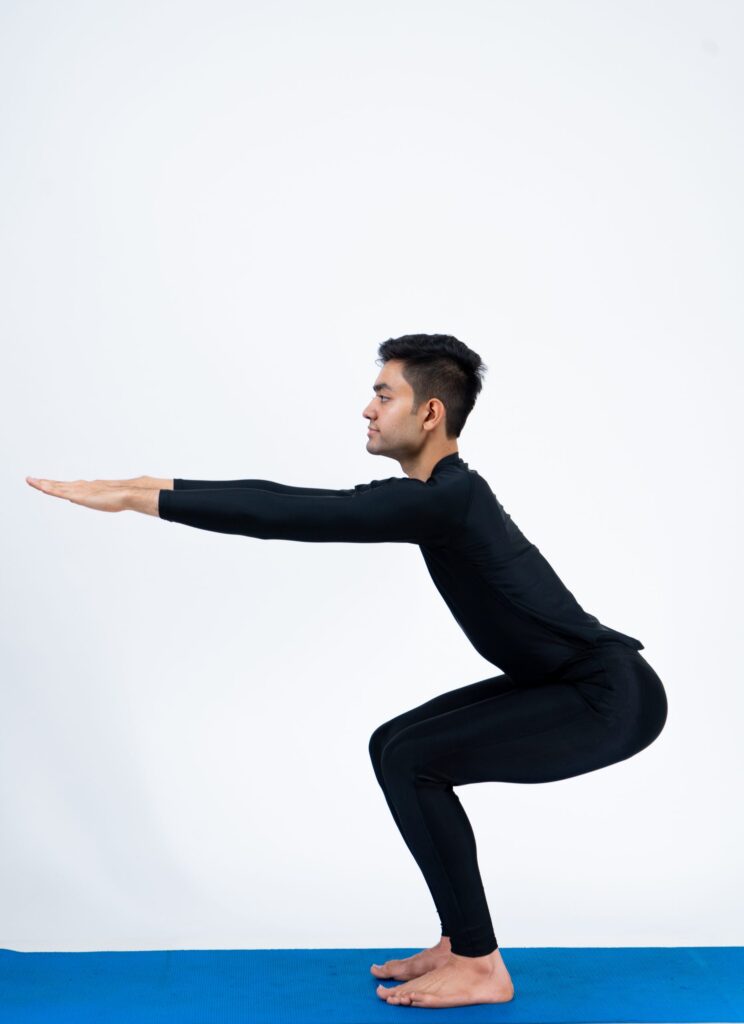
- Set the cable to a high pulley and attach it to a belt or harness around your waist.
- Step forward to create tension and sit against the imaginary wall (thighs parallel to the ground).
- Hold the position for 30–60 seconds.
Benefits:
- Boosts quad muscular endurance.
- Builds mental toughness and leg strength.
- The perfect finisher for leg day.
7. Cable Front Kick (Low Pulley, Isolated)
Target: Lower quads, hip flexors
How to:
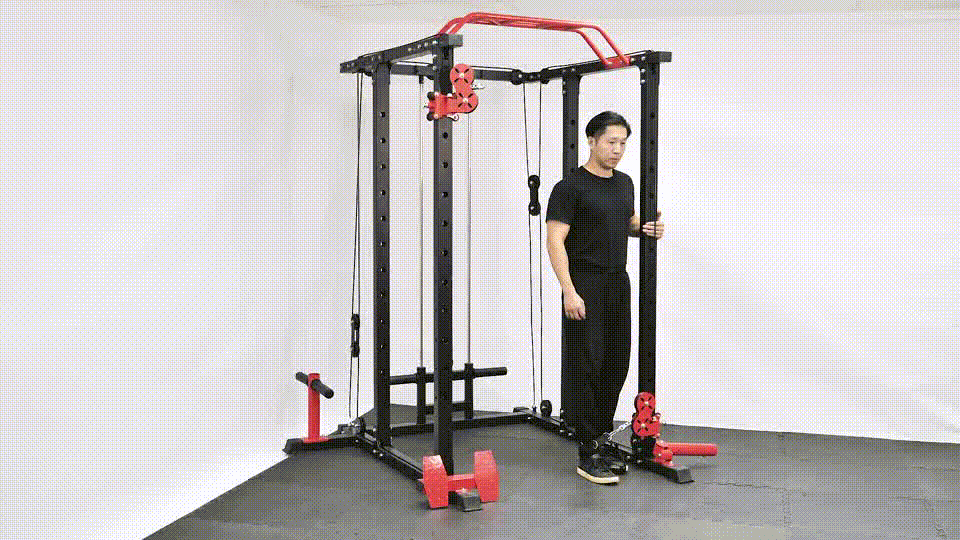
- Attach an ankle strap to the low pulley.
- Stand tall, facing away from the machine.
- With your core tight, kick your leg forward like a soccer kick.
- Return slowly and repeat.
Benefits:
- Engages quads in explosive, dynamic movement.
- Great for athletes needing leg speed.
- Strengthens hip flexors and enhances kicking power.
Fun Fact: Martial artists and soccer players often use this to build control and power in kicks — it doubles as a functional quad workout!
Final Thoughts: Why Cables Win for Quad Workouts
Unlike traditional weights, Hi-Lo pulley cables maintain tension throughout the movement, which means your muscles are working at every inch of the rep.
They’re also safer on joints, easily adjustable for all fitness levels, and ideal for people recovering from injuries or looking for variety.
Whether you’re chasing aesthetic gains, athletic strength, or functional movement, these 7 Hi-Lo Cable Quad Exercises give you all the tools to build powerful legs — one rep at a time.
Frequently Asked Questions (FAQs)
Are cable machines effective for building quad muscles?
Yes, cable machines are highly effective for quad development. They offer constant tension throughout the movement, which increases time under tension — a key factor in muscle growth.
What makes Hi-Lo cable exercises better than free weights for quads?
Hi-Lo cables allow for smoother, more controlled movements with adjustable resistance. They reduce the risk of injury by minimizing joint stress and offer more variety in movement angles to better isolate the quadriceps.
Can I do these exercises at home with a functional trainer or resistance bands?
Absolutely. If you have a home cable system or functional trainer, most of these exercises can be replicated. For resistance bands, while not identical, you can mimic similar movements with adjusted form and anchor placement.
How often should I train quads with cable exercises?
For optimal results, train quads 2–3 times per week. Always allow 48 hours of rest between intense sessions to ensure proper recovery and muscle growth.
Are these exercises safe for people with knee pain?
Yes, most cable exercises are low-impact and easier on the joints. However, always consult with a physiotherapist or trainer before starting if you have knee issues. Exercises like Cable Wall Sit and Cable Split Squats can often be modified to be knee-friendly.
Can beginners do Hi-Lo cable quad exercises?
Definitely. These exercises are beginner-friendly because they allow you to start with very low resistance and focus on mastering form. Over time, you can gradually increase the weight and intensity.
What’s the best rep and set range for quad hypertrophy using cables?
Aim for 3–4 sets of 10–15 reps per exercise. This range strikes a balance between volume and resistance, which is ideal for muscle hypertrophy (growth).
Do these cable exercises work other muscles too?
Yes! While quad-focused, many of these moves also engage your glutes, hamstrings, core, and stabilizers, especially during unilateral or balance-based movements like step-through lunges or split squats.
